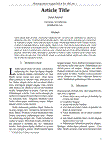| Summary: | The demand for high quality, palatable protein ingredients for aquatic feeds has grown along with the aquacultureindustry. Although fishmeal continues to play a significant role, its generally high cost, variability of supply andlimited scope for increased fishmeal production have led to interest in identification and development of alternativeprotein sources. Rendered animal by-products are produced in significant quantities and are available in a variety offorms, including meat and bone meals and poultry by-product meals.A number of studies have shown that many of these by-products are suitable for inclusion in aquatic feeds in partialreplacement of fishmeal. This paper reviews some of this research, with an emphasis on shrimp feeds. In general,rendered animal by-products can replace from 15 to 75% of fishmeal in diets for shrimp. Most of the publishedresearch on by-products was conducted in clean, flow-through water conditions, whereas shrimp are commerciallycultured in outdoor ponds, where there is considerable opportunity for shrimp to supplement their diet withendogenous organic material (floc) from the culture environment. Under conditions of high floc availability, it hasbeen found that rendered animal by-products may replace a significantly higher portion of fishmeal in diets for shrimp,without significant reduction of growth. Variability of the composition of the rendered material in by-productsnecessitates the profiling of incoming by-products before formulating to effectively use this material to meet thenutrient requirements of fish or shrimp.
|
|---|
